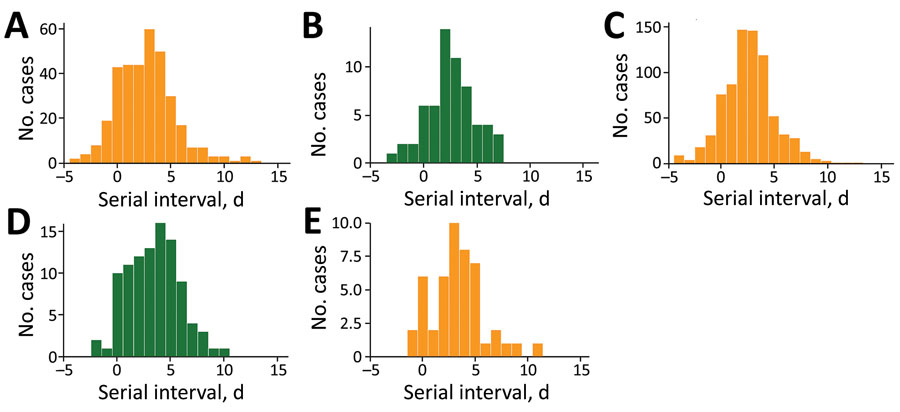Volume 28, Number 8—August 2022
Dispatch
Serial Intervals for SARS-CoV-2 Omicron and Delta Variants, Belgium, November 19–December 31, 2021
Figure 2

Figure 2. Empirical distribution of the serial intervals for SARS-CoV-2 Omicron (A, C, E) and Delta (B, D) variants, for transmission pairs where both cases are unvaccinated (A, B), vaccinated (C, D), or vaccinated with a booster (E, no data for Delta variant), Belgium, for cases with onset date of infector during November 19–December 31, 2021.
1These first authors contributed equally to this article.
Page created: June 08, 2022
Page updated: July 20, 2022
Page reviewed: July 20, 2022
The conclusions, findings, and opinions expressed by authors contributing to this journal do not necessarily reflect the official position of the U.S. Department of Health and Human Services, the Public Health Service, the Centers for Disease Control and Prevention, or the authors' affiliated institutions. Use of trade names is for identification only and does not imply endorsement by any of the groups named above.